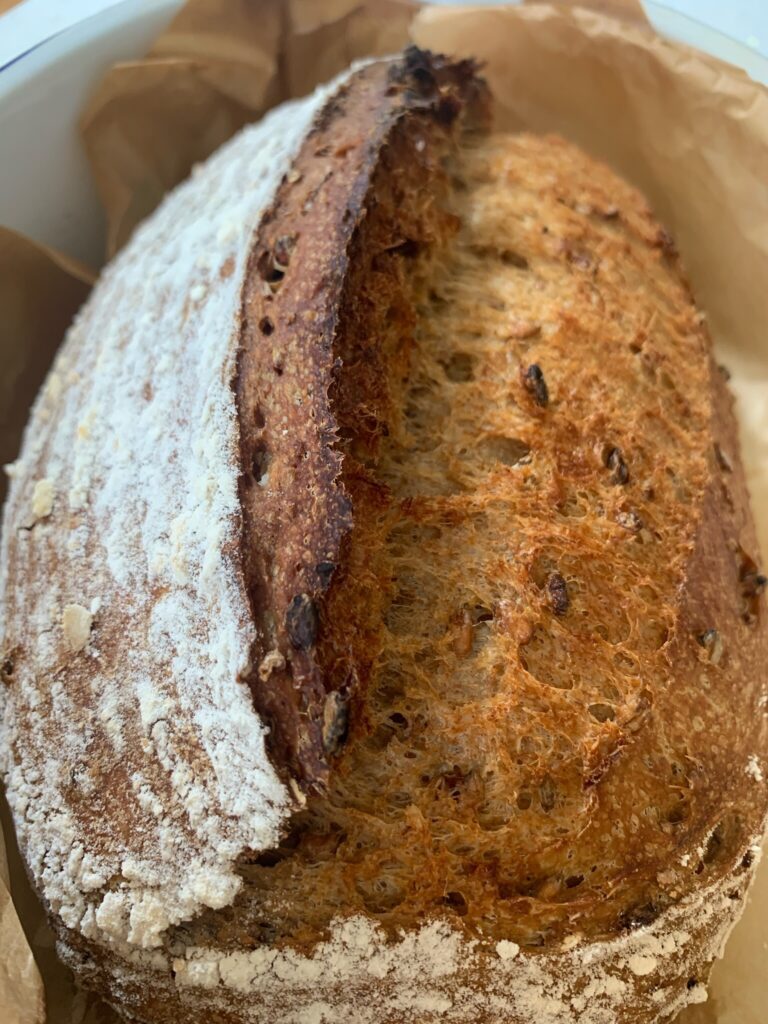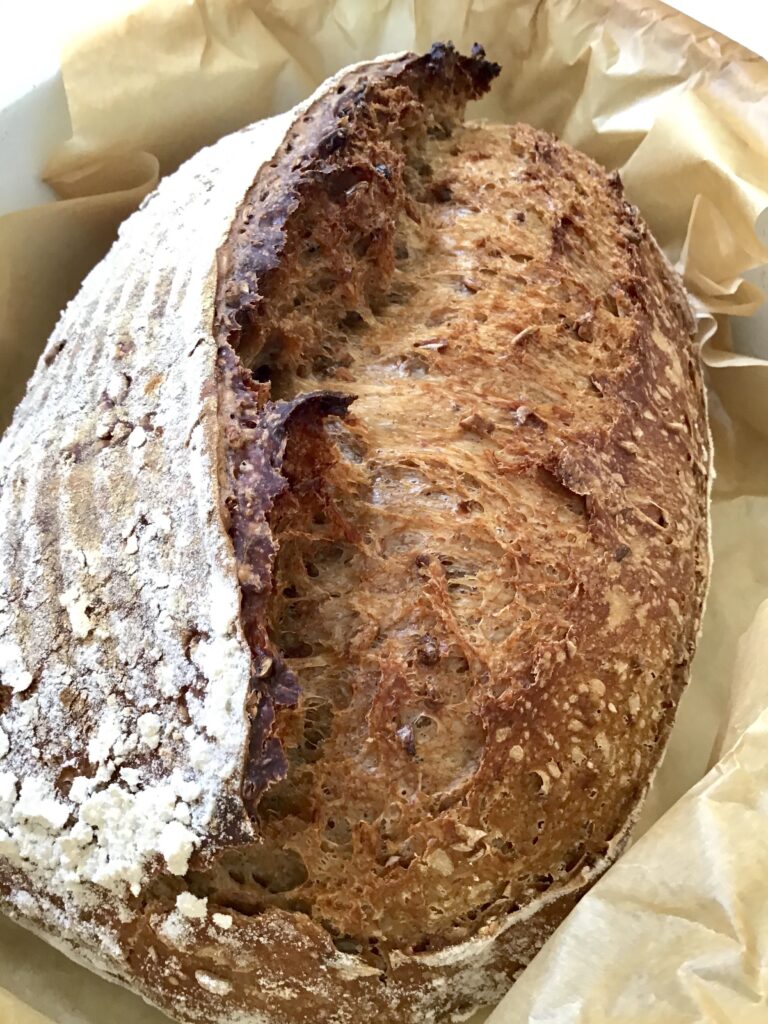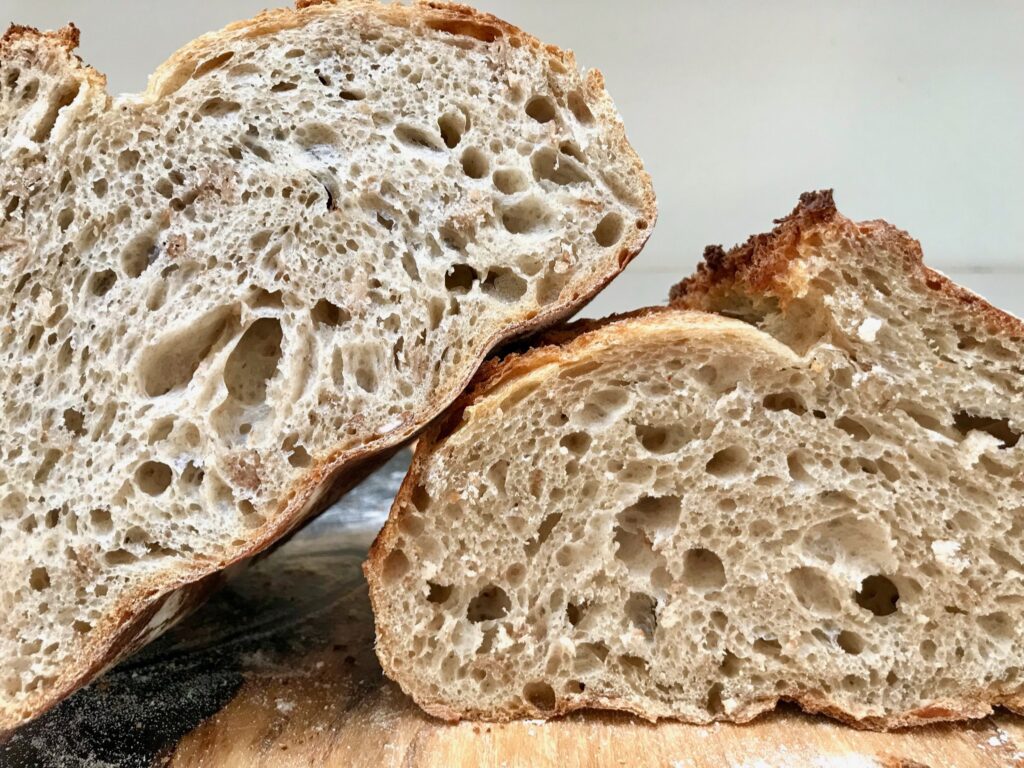
Matthews Cotswold Crunch flour produces the tastiest loaves as far as I’m concerned. It is a beautiful flour, lovely to work with, as well as to bake and it works perfectly in my recipes, but it does need some understanding for using it in my master recipe so below I have added some tips for you and how to use it.

But first, to give you some idea about how it tastes, this is how the flour is described on their website:
Matthews Cotswold Crunch flour is a speciality blend of strong bread flour, malted wheat flakes and malt flour for bread and rolls. The flour has a nutty taste and a signature darker colour. This flour is extremely popular due to its flavoursome, malty aroma with added texture from the wheat flakes. Great taste award winner and one of our best sellers!

To use 100% of this wondrous flour with my master recipe, follow the recipe exactly as it is. The dough will feel soft and sticky initially but stick with it, don’t think it needs less water or more flour, it will come together and the dough will firm up as you work with it, and the flour absorbs the water.
Alternatively use Cotswold Crunch in partnership with another flour, in any ratio it works well. It also produces amazing rolls and wonderful sandwich loaves, just use it in my recipes as they’re written.


I asked Bertie from Matthews to explain ‘malting flour’ to give me a better understanding and this is my rough explanation:
Malting is a process that is used in brewing beer by adding water to a flattened grain to ferment (germinate) it to develop its flavour; it is then dried on a ‘malting floor’ (a hard heated floor) to convert it to malt. This process of germinating the grains then drying them is also called ‘steeping’. The flavour that is dried into the grains is then unleashed when they are milled into flours and added to our doughs.
Because the grains have been soaked before drying, by adding malted flours to doughs releases some of that moisture again into the dough, hence the dough becoming so soft during the making process. I hope I’ve got that right!

If you try it, have fun!
I apologise to those of you that don’t have access to this lovely flour yet, hopefully you will soon. For any of you in the UK, you can find it here.
